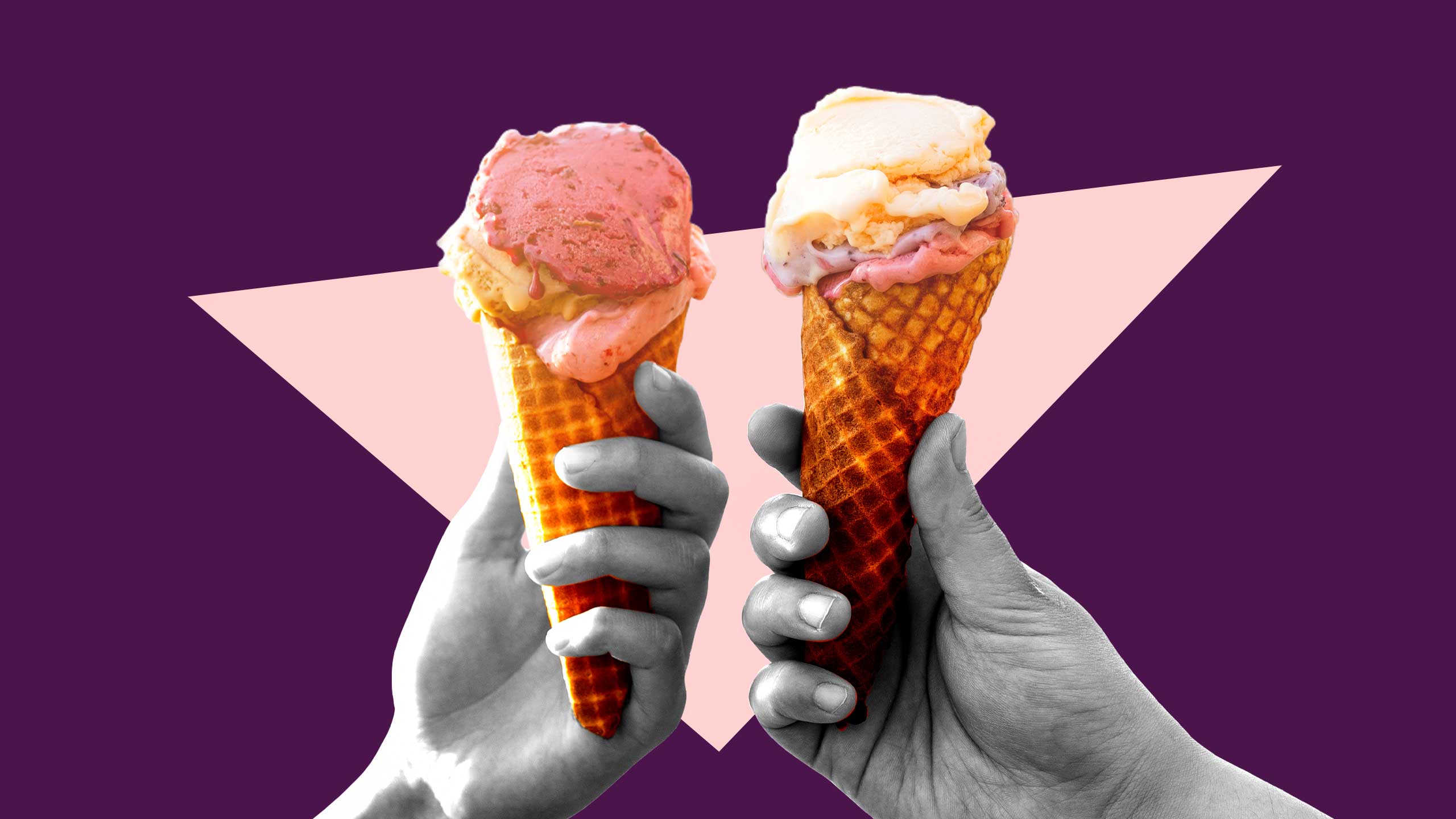As the pandemic and its associated lockdown sped its way through spring and summer, my partner and I started devising new ways of amusing ourselves. We invented increasingly complicated and inscrutable names for our cats, unintentionally creating some kind of primitive baby-babble language in which calling out “Shbibblet” or “Shboo-boo” is an acceptable way of communicating with our pets. We tried to identify plants we passed by on our neighbourhood walks, plugging pictures of leaves into an app. And we played “they’re lesbians.”
“They’re lesbians” is a simple game that you can play either online or IRL. The premise is simple: Identify two animals or objects that are sitting beside one another, point to them and say “they’re lesbians.” The key is to find things that look like they’re lesbians. These two things are frequently, though not always, seeming opposites in size or aesthetic dispositions. Of course, there’s no one way to look like a lesbian—sometimes, these objects can be identical. For example: If you stumble upon two cats sitting beside each other on the sidewalk, one of them extremely chunky, the other one thin? They’re lesbians. Two pick-up trucks parked beside each other in a lot, one red and rusted, the other pink and new? They’re lesbians. You find two identical trash bags filled with stinking garbage outside your front door? They’re lesbians.
“They’re lesbians” didn’t originate with us. This sacred cultural ritual has been trending online for years. When it began is difficult to pin down—though similar, it actually isn’t related to the “Harold, they’re lesbians” meme—but it now pervades queer social media across platforms. A picture of two cats kissing in a field of flowers; a shot of two pencils beside each other, one significantly taller than the other; a photoset of two birds on skateboards, one a chicken, the other a parakeet. These posts zip through Twitter and Instagram accompanied by captions informing the audience that “they’re lesbians.”
“We don’t need the LGBTQ2S+ section of video streaming services—we just need a bit of creativity and an astute eye.”
Within the constraints of this game/meme/exercise in social signification, any two objects held side-by-side are, in fact, lesbians—but especially if one is slightly larger than the other, or if one is more brightly coloured or if one looks grumpy and the other one looks blissful. These images of contrasting objects are a kind of mimicry of lesbian representation, especially but not always of the butch/femme couple. It’s a way of playing with representation that isn’t bogged down by politicization and seriousness; it is, after all, just a meme.
We don’t need to rummage through videotapes for a copy of 1996’s Bound, or fast-forward through Jennifer’s Body to find the scene where Megan Fox flicks a lighter under her tongue in front of her friend. Are we looking to see ourselves outside of ourselves? Do we want to come to know and love who we are by seeing it reflected in the world around us? We don’t need the LGBTQ2S+ section of video streaming services—we just need a bit of creativity and an astute eye.
Within the happy imaginings of “they’re lesbians,” we need not recall cringing at shoddy and shallow attempts at queer women’s representation in media, nor expend energies fretting over whether this femme or that butch is too problematic. We don’t need more lesbian period dramas or cheesy holiday romcoms. Here, anything cute, wholesome, loving or weird can be a lesbian. I found these two frogs sitting together on a leaf, and they’re lesbians. We can imagine the meme as a way we reclaim media representation for ourselves, filling the gaps of what we think is missing with our own efforts.
But why lesbians specifically? What about two things in close proximity to one another screams women-who-love-women energy? It may have something to do with the kind of mutual obsession that stereotypes sapphic relationships. The memeified image of the lesbian couple renting a U-Haul truck to move in together after a mere few weeks of dating emblemizes the way popular culture loves to think about these relationships. We love to imagine the lesbian relationship as a space of burning, intensive passion or a realm of intimate, all-consuming love. It’s no coincidence that the woman from whom we take our communities’ names was a poet with a romantic flair—“in the crooks of your body, I find my religion,” croons the mother of all sapphics. Intimacy itself is basically lesbian.
“The history of the world is the history of looking at lesbians as anything other than lesbians.”
On the other hand, one trend has dominated sapphic relationships throughout history: Invisibility. Even our Sappho—whose poems are marked by lines like “slender Aphrodite has overcome me with longing for a girl”—continues to be categorized as a heterosexual woman by academics. The history of the world is the history of looking at lesbians as anything other than lesbians. They’re just roommates or very good friends or step-sisters or anything but the monster of the lesbian.
“They’re lesbians” aggressively counters this trend of misrecognition by over-recognizing. If homophobic, patriarchical history would act as though nothing is lesbian, “they’re lesbians” is the necessary counterpoint to create a world in which everything is lesbian. The museum of lesbi-phobic history tried to hide our artifacts in their backroom, so we claimed everything in the building as our own.
But “they’re lesbians” hints at something even more than a reclamation of representation. In its tongue-in-cheek way, it begins to chip away at the concept of representation altogether. It isn’t irony, because it goes beyond that. We’re not being satirical—we’re serious that the two bedazzled pens laying on a table together are, quite unironically, lesbians. “They’re lesbians” enters a realm in which irony is absorbed into truth, muddled together in such a way that sarcasm and seriousness are indistinguishable.
While “they’re lesbians” is an absurd game, its sincere irony allows it to arrive at a truth: Representation can be plain and simple entertainment. It’s a fun game that we play for a few minutes worth of low-effort stimulation, but it doesn’t do much beyond that.
This notion of representation as something directly tied to, and indeed causing, societal advancement is discarded totally with “they’re lesbians.” We know that it isn’t in any way a serious pastime to look at the world around us trying to recognize parts of ourselves in it. It doesn’t mean anything for the bigger picture—it won’t help us to eliminate the way our world is structured to discriminate against women and those who aren’t heterosexual. But it’s fun. Plus: They’re lesbians.


 Why you can trust Xtra
Why you can trust Xtra


